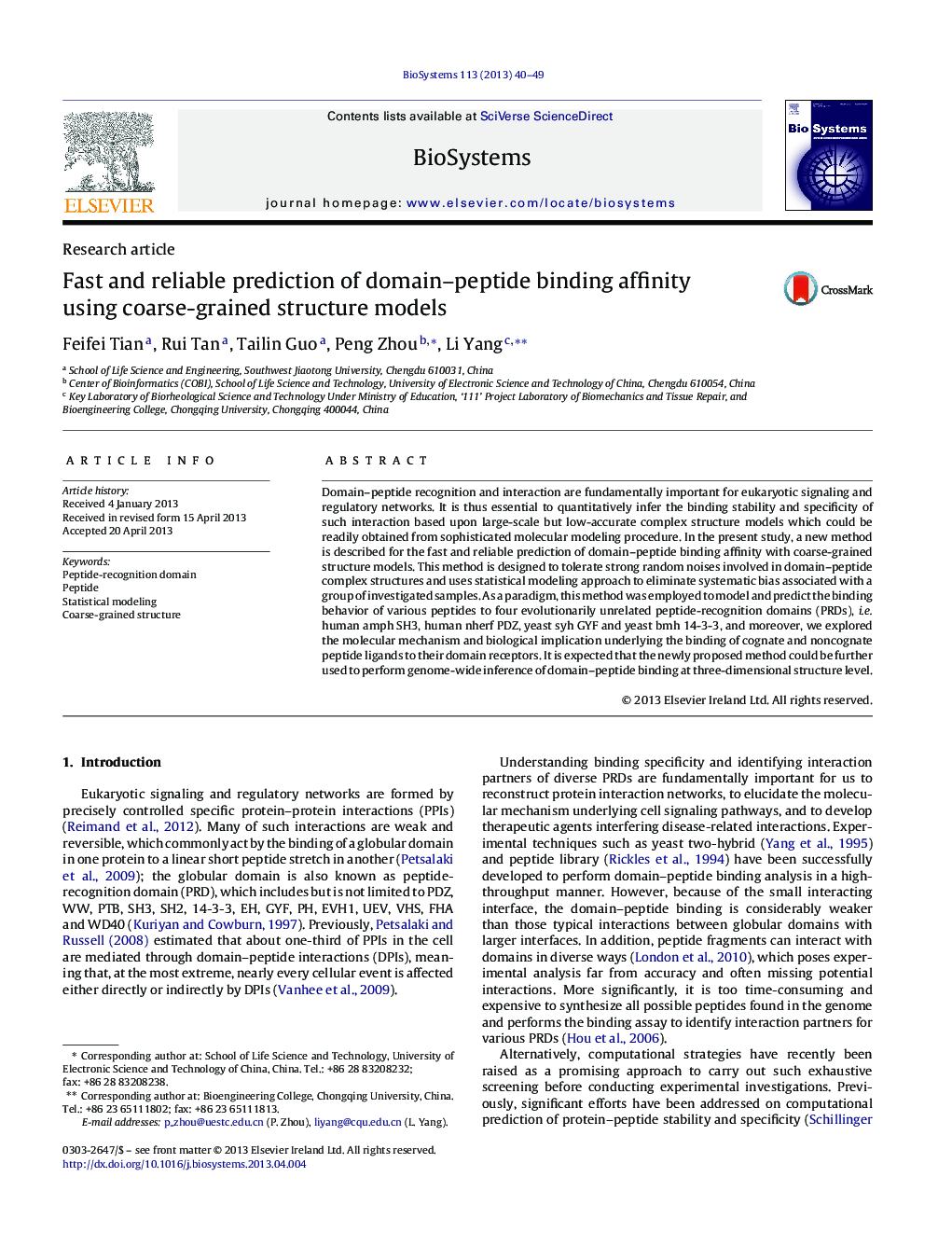| Article ID | Journal | Published Year | Pages | File Type |
|---|---|---|---|---|
| 2076096 | Biosystems | 2013 | 10 Pages |
Domain–peptide recognition and interaction are fundamentally important for eukaryotic signaling and regulatory networks. It is thus essential to quantitatively infer the binding stability and specificity of such interaction based upon large-scale but low-accurate complex structure models which could be readily obtained from sophisticated molecular modeling procedure. In the present study, a new method is described for the fast and reliable prediction of domain–peptide binding affinity with coarse-grained structure models. This method is designed to tolerate strong random noises involved in domain–peptide complex structures and uses statistical modeling approach to eliminate systematic bias associated with a group of investigated samples. As a paradigm, this method was employed to model and predict the binding behavior of various peptides to four evolutionarily unrelated peptide-recognition domains (PRDs), i.e. human amph SH3, human nherf PDZ, yeast syh GYF and yeast bmh 14-3-3, and moreover, we explored the molecular mechanism and biological implication underlying the binding of cognate and noncognate peptide ligands to their domain receptors. It is expected that the newly proposed method could be further used to perform genome-wide inference of domain–peptide binding at three-dimensional structure level.
